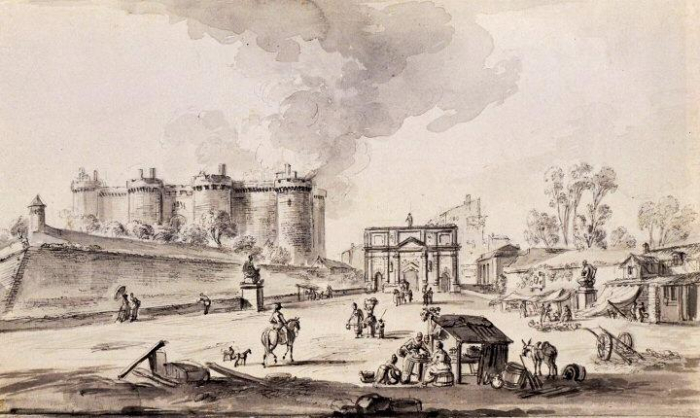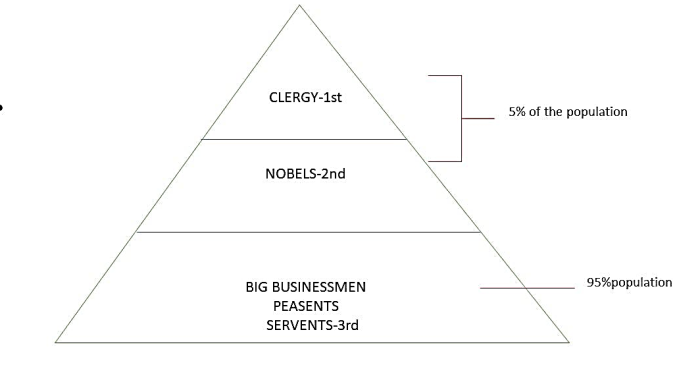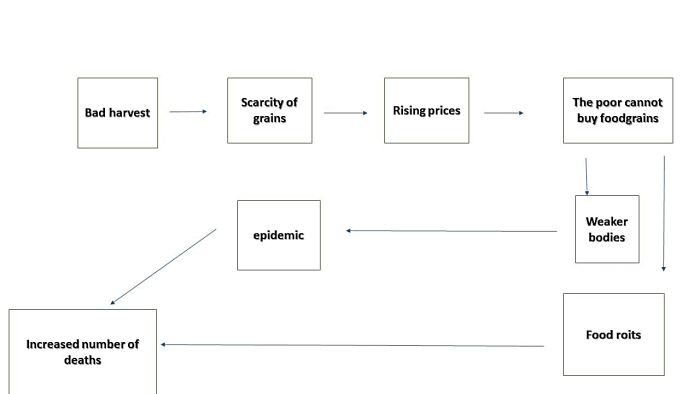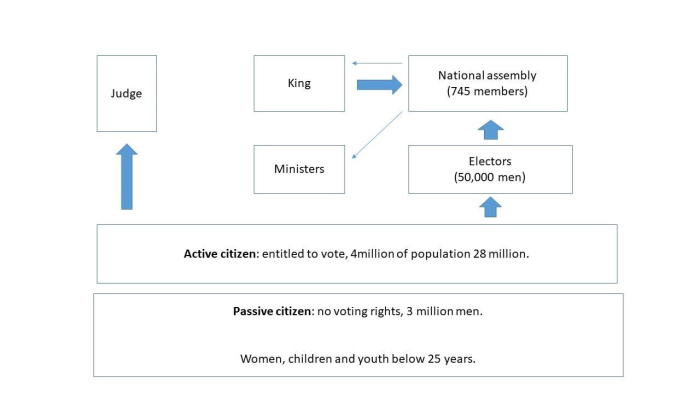- Warfare for Wealth
- Vedic life in India
- Vedic Age
- Varna system
- Vajji
- Upanishads
- Trade and traders
- The Wise Beggar- Upanishad
- The Value of Paper
- The system of Ashrams
- The study of skeletons
- Gautama Buddha
- The story of Kisagotami
- The Story of Baryga
- The spread of Buddhism
- The Silk Route
- The Second Urbanisation
- The sangha
- The iron pillar
- The beginning of Bhakti
- The “achievements” of Nagabhata
- Six Schools of Indian Philosophy
- Samudragupta the warrior
- Oracle bones
- New Social and Political Groups traces from history
- New kingdoms along the coasts
- New and Old Terminologies used in History
- Monasteries
- Men as RULERS and KINGS
- Literature, art and books
- Legacy and Decline of the Gupta Empire
- Janapadas, Mahajanapadas
- Jainism
- Irrigation and villages during Ashoka
- Iron tools and agriculture in ancient India
- Inamgaon
- Harshavardhana and the Harshacharita
- Graves and Burials
- Early humans in INDIA (Locate)
- Ashoka’s war in Kalinga
- Ashoka’s inscription describing the Kalinga war
- Ashoka’s dhamma?
- Ashoka (a unique ruler)
- Arikamedu
- Archaeological evidences ?
- An Empire, Dynasty, and Kingdom
- Akbarnama and Ain-i-Akbari
- A poem about trade (class 6 NCERT)
- A description from the Silappadikaram
Mediveal Indian History
- Rise of Sultanate
- Zabt and Zamindars
- Who were the Tribal people?
- Who were the Mughals?
- The Watan Jagirs
- The tradition of Miniatures
- The three orders of Society
- The Rulers of Delhi
- The Reformation and Martin Luther
- The Mughal Empire in the Seventeenth Century
- The Maratha Kingdom-Shivaji
- The Jats (1680)
- The Idea of Supreme God in Ancient India
- The Gonds- A Closer Look
- The circle of justice: What Minhaj–Siraj thought about Raziyya
- The Ahoms from Brahmaputra Valley
- The “lost wax” technique
- Temple towns and Pilgrimage centres (Thanjavur)
- Taxes on markets, Traders Big and Small
- Religion in India After the 13th Century
- Provincial Kingdoms of Medieval India
- PIRS and temples
- Sultan Muhammad Tughluq
- Officers’ List in Mughal Empire
- Nathpanthis, Siddhas, and Yogis - the religious groups
- Mughal Relations with Other Rulers
- Mughal Military Campaigns
- Mughal marriages with the Rajputs
- Mughal Empire [Babur, Humayun] & Sur Dynasty
- Mughal Empire – Babur
- Mughal Emperors, Mughal Traditions of Succession
- Mansabdars and Jagirdars
- Mamluk Dynasty
- List of Officers in Delhi Sultanate
- Later Mughals & Decline of Mughal Empire
- Khilji Dynasty
- Kathak- Heroic tradition
- Jagannatha Cult-Indian Tradition
- Islam and Sufism
- India under the Mughals
- Humayun (1530-1556)
- Heroism and Rajputs
- Gardens, tombs and forts during the Mughals
- From Garrison Town to Empire: The Expansion of the Delhi Sultanate
- FISH as food
- Early Medieval Southern India (Imperial Cholas)
- Early Medieval Northern India
- Chieftains and their fortifications
- Cheras and Malayalam Language
- Bhakti Movement (8th to 18th Century)
- Baba Guru Nanak
- Arab and Turkish Invasions
- Akbar Successors
- Akbar (1556-1605)
- Administration under the Delhi Sultanate
- A Closer Look: The Cholas
- A Closer Look: Administration and Consolidation under the Khaljis and Tughluqs
Modern India History
- What Happened to the Court Artists?
- Freedom is our Birth Right
- Classical dances in India
- Why the Demand for Indian Indigo?
- What Happened to the Local Schools?
- Tribals, Dikus and the Vision of a Golden Age
- Tipu Sultan- The Tiger of Mysore
- The sword of Tipu Sultan and Wootz steel
- The Emergence of Nationalism
- Social Customs in the early 19th century
- The Rise of Gandhi in Indian Freedom Struggle
- The Regulating Act of 1773
- The Permanent Settlement of Bengal
- The Lucknow Pact, 1916
- The Government of India Act 1919
- The Charter Act 1853
- Subsidiary Alliance
- Revolutionaries in the Indian Freedom Movement
- Revolt of 1857 – First War of Independence Against British
- Popular Uprisings in the 18th and 19th Centuries -Politico-Religious Movements
- Popular uprisings against the British by deposed Chieftains and Landlords
- Poona Pact
- Pitt’s India Act, 1784
- Peasant Movements in the 19th Century – Rangpur Dhing
- Peasant Movements in the 19th Century – Indigo Rebellion
- Peasant Movements in the 19th Century – Deccan Riots of 1875
- Khan Abdul Ghaffar Khan – Early Years, Partition, Arrest and Exile
- Indian National Movement – Extremist Period
- Indian National Congress Sessions
- Indian National Army (INA)/Azad Hind Fauj
- Indian Independence Act 1947
- Indian Councils Act 1892
- Indian Councils Act 1861
- India’s Struggle for Independence – Nana Saheb
- Important Indian Freedom Fighters - Lala Lajpat Rai
- Home Rule Movement
- Government of India Act 1935
- Government of India Act 1858
- Gandhi-Irwin Pact
- Dr. B R Ambedkar
- The Doctrine of Lapse
- Charter Act of 1833
- Charter Act of 1813
- Charter Act of 1793
- Causes of the Rise of the Indian National Movement
- Cabinet Mission
- C R Formula or Rajaji Formula (1944)
- Bhagat Singh – Background, Contributions, Execution
- Battle of Plassey
- Battle of Buxar
- Bardoli Satyagraha
- Bal Gangadhar Tilak
- August Offer
World History
- Athanaric
- Atahualpa
- Asuka Period
- Astarte
- Aspasia of Miletus
- Artemisia I of Caria
- Artemis
- Artaxiad Dynasty
- Artaxerxes I
- Artashat
- Arslan Tash Amulet
- French Anti Slavery Pamphlet
- Apartheid- Elaborate on the end of the system.
- Boston Tea Party and the Boston Massacre.
- Great Wall of China and its convict-built protection.
- Ancient Egypt-Concept of life and death
- Nuclear Arms Race-Post World War II
- Witch hunts and the Catholic Church.
- Communities of the Caribbean and Brazil
- Korean Democracy and IMF Crisis
- Korean War
- Establishing Democracy in China: 1949-65
- Rise of the Communist Party of China
- Civil wars of China
- Opium Wars
- The Meiji Restoration
- The Political System of Japan
- Ancient civilization and the use of weapons.
- Spain and Britain-Battle of the sea
- The Nagasaki Events and Hiroshima.
- Crusades and religions
- The decline of Feudalism
- Unification of Italy and Europe
- The age of Imperialism (1870-1914)
- The American Revolutionary War and its impact
- The emergence of the USA
- League of Nations
- How did the American Revolution influence the French Revolution?
- Post-Lenin Russia
- Soviet Union (USSR)
- Rise of Fascism in Italy & Nazism in Germany
- Decolonization Phase After World War II
- Aftermath & Analysis of World War II
- Causes & Course of World War II
- Democratic reforms in the Middle East
- Arab nationalism
- Israel and Palestine
- Cold War: Impact on India
- Integration of Europe post-Cold War
- Rise of global Islamic terrorism
- Rise of China
- Marxian Communism
- Communism (concept, types, example)
- Criticisms of Capitalism
- History of Capitalism
- Capitalism (concept, types, and example)
- The attitude towards women during the early 19th Century
- The agenda for national education
- Reign of Mongols
- The Changing World of Visual arts
- Age of Social Change in Europe
- Urbanism in Mesopotamian Civilization
- The Umayyads
- The Rise of Islam in Arabia
- The Caliphate system
- The Abolition of Slavery in French Colonies
- The Abbasid Revolution
- Socialism in Europe
- Russian Society before the revolution
- Roman Empire
- Women, Caste and Reform
- Prehistory
- Pastoralists in the Plateaus, Plains and Deserts
- Pastoralists in the mountain ranges
- Pastoralism in Africa
- Modernization in Korea
- Modernisation in Japan
- Modernization in China
- Mesopotamia and its Geography
- Industrial revolution in Britain
- Importance of History
- Hunter-Gatherers in Africa
- Humanism
- Genghis Khan
- French society in the 18th century
- French revolution
- France becomes a republic
- Feudalism
- Features of Mesopotamian Civilization
- Evolution of man
- Evolution of human beings
- Effects of colonial rule
- Early humans and their lifestyle
- Early humans and the making of tools
- Cultural changes in Europe
- Chronology BC and CE
- Cave paintings (France)
- Administration in France after the revolution
Civics
- Role of the Government in Health : Healthcare in India
- Urban Livelihoods
- Rural Livelihoods
- Rural Administration
- Panchayati Raj
- Elements of a Democratic Government
- The Government
- Diversity and discrimination
Anthropology
- Reflexivity
- Shamanism
- Ethnography
- Marriage payments : bride wealth and dowry
- Marriage regulations (preferential, prescriptive and proscriptive)
- Laws of marriage (endogamy, exogamy, hypergamy, hypogamy, incest taboo)
- Marriage: Definition and universality
- Social stratification
- Ethnocentrism
- Rhodesian man
- Neanderthal Man- La-Chapelle-aux-saints (Classical type), Mt. Carmel (Progressive type).
- Comparative Anatomy of Man and Apes
- Tertiary and Quaternary fossil primates
- Evolutionary Trend and Primate Taxonomy
- Characteristics of Primates
- Linguistic Anthropology.
- Archaeological Anthropology
- Biological Anthropology
- Social-cultural Anthropology
Sociology
- Sociological Network
- Objectivity and Reflexivity in Social Science
- Indian Sociological Thinkers
- Post Modernism, Post Structuralism and Post Colonialism
- Hermeneutic and Interpretative Traditions
- Parenting in LGBT families
- Intergenerational marriage
- Mass media harassment
- Character representation in Kids’ cartoons
- Online dating; the positive and negative effects
- How the social media aided the “black lives matter” campaign
- Eco feminism
- Tribal communities in India
- The idea of Indian village and village studies.
- Modernization of Indian tradition.
- Education and social change.
- Agents of social change.
- Sociological theories of social change.
- Patriarchy and sexual division of labour.
- Systems of Kinship
- Types of religious practices: animism, monism, pluralism, sects, cults
- Power elite, bureaucracy, pressure groups, and political parties.
- Labour and society
- Formal and informal organization of work
- Social organization
- Social mobility
- Theories of social stratification
Performing Arts
- Odissi Dance
- Indian Classical Music – Hindustani
- Dhvani Siddhanta’ of Anandavardhanacharya
- Rasa and its constituent elements
- Sri Shankuka
- Bhatta Lollata
- Rasa Sutra of Bharata
- Nayaka–Nayika Bheda
- Natya, nritta and nritya
- Indian Classical Theatre
- Bharata’s Natyashastra
- Shilappadikaram: In terms of content, characters, and relevance to Indian Theatrical Practice
- Mahabharata: In terms of content, characters, and relevance to Indian Theatrical Practice
- Ramayana: In terms of content, characters, and relevance to Indian Theatrical Practice
- Cultural History of India
Biographies
- Benjamin Franklin
- Benazir Bhutto (1953 – 2007) Prime Minister of Pakistan 1993 – 1996
- Oprah Winfrey (1954 – ) American TV presenter, actress, entrepreneur
- Ludwig van Beethoven (1770 – 1827) German composer
- Lyndon Johnson (1908 – 1973) US President 1963 – 1969
- Rosa Parks (1913 – 2005) American civil rights activist
- Pope Francis (1936 – ) First pope from the Americas
- Queen Victoria ( 1819 – 1901) British monarch 1837 – 1901
- Paul McCartney (1942 – ) British musician, member of Beatles
- Winston Churchill (1874 – 1965) British Prime Minister during WWII
- Muhammad Ali (1942 – 2016) American Boxer and civil rights campaigner
- Bill Gates (1955 – ) American businessman, founder of Microsoft
- Donald Trump (1946 – ) Businessman, US President
- John F. Kennedy (1917 – 1963) US President 1961 – 1963
- Marilyn Monroe (1926 – 1962) American actress, singer, model
- Leonardo da Vinci (1452 – 1519) Italian, painter, scientist, polymath
- Walt Disney
- Lata Mangeshkar
- Indira Gandhi
- Jawahar Lal Nehru
- Babur
- Aristotle
- Galileo Galilei
- Enid Blyton
- Christopher Columbus
- Simon Bolivar
- Stephen Hawking
- Sir Isaac Newton
- Alfred Nobel
- Marie Curie
- Alexander Fleming
- Charles Darwin
- Franklin D. Roosevelt
- M.K. Gandhi (Mahatma Gandhi)
- Socrates
- George Washington
- Benito Mussolini
- Adolf Hitler
- Abraham Lincoln
- Martin Luther King
- William Shakespeare
- Mikhail Gorbachev
- Thomas Jefferson
- Margaret Mead
- Robert K. Merton
- Talcott Parsons
- Emile Durkheim
- Karl Marx
History of Art
- Mycenaean Culture & Art: History & Influence:
- Amarna Period: Definition & Art:
- The Luxor Temple in Egypt: Facts & Overview
- Queen Hatshepsut: Facts, Accomplishments & Death
- Ancient Egyptian Sculptures & Paintings: Innovation & Examples
- Egyptian Pyramids: Definition, Facts & Structure:
- Funerary Beliefs, Practices & Temples in Ancient Egypt:
- The Pharaohs as Patrons of the Arts
- Ancient Egyptian Art & Architecture: History, Politics & Culture:
- Assyrian Art and Architecture
- Art of the Babylonians: Style, Examples & Achievements
- Mesopotamian Art During the Akkadian Dynasty & Neo-Sumerian Period
- Sumerian Art and Architecture
- Human & Animal Forms in the Art of the Ancient Near East:
- Representation of Spiritual Beliefs in the Art of the Ancient Near East
- Artworks of the Ancient Near East: Materials, Forms & Functions
- Use of Naturalism & Stylization in Mesopotamian Art
- Art of the Ancient Near East: Periods & Characteristics:
- Mesopotamia: Culture, Facts & History:
- Art in the Neolithic Era: Innovations, Characteristics & Examples
- Cave Painting: History & Pictures:
- Art in the Upper Paleolithic Era: Examples & Style
- What Is a Medium in Art: Definition & Terms
- What is Western Civilization? - Definition & Overview
- Why do Humans Make Art? - History & Value
- What is Art History? - Definition & Overview
Introduction
The late 18th century in France was a period of turmoil and hardship, people were continuously protesting against the current monarch Louis XVI. There was a growing dissatisfaction among the peasants and working class. People pour into the streets against the monarch which turned violent in the morning of 14th July 1789, when a rumour started that the king had ordered the army to open fire on protestors.
Approx. 7000 people decided to form a miptia and they started breaking government buildings and destroying them, a group of protestors marched and stormed the state fortress prison, the Bastille, looking for ammunition. The commander of Bastille was killed and all prisoners were freed and the fortress was destroyed. This event was the start of a long revolution that ultimately led to the execution of the king.

There were multiple causes and chains of events that led to the complete transformation of French society and poptics. In this article, we have also kept in mind the social environment of 18th-century France.
The Social Environment of 18th-Century France
The society was spanided into 3 sections or estate, first were the Clergy, the second was the Nobipty, and the third was the rest of society which included big businessmen, merchants, court officials, peasants, artisans, small peasants, servants, etc. the society was in hierarchical form and the members of first two estates enjoyed the privileges of birth.

Both upper states were exempted from any taxes. The taxes were being paid by the third state only. Churches also extracted indirect taxes from the poor peasants. This was one of the main reasons for the growing poverty and dissatisfaction among the majority population.
The growing population in the late 18th century also resulted in poverty and a shortage of food for the 3rd states, as they work in the household of the upper two estates, the shortage of food led to an increase in the price but their wages remain unchanged which badly impacted the pvephood of poor peasants. The bad harvest from the previous year lead to the scarcity of food grains which resulted in riots. At that time France was also struck by an epidemic these certain phenomena resulted in the disarray of the french society, the poor were suffering but the upper classes were untouched by these ill effects and were enjoying their privileges.
The crisis of food grain can be understood from the diagram below −

The Outbreak of Revolution
Amid the increasing prices of goods due to low yield and increased population, the aristocracy was still enjoying its enriches and the origin of the revolution starts when the controller general of finances, Charles de Calonne, arranged the assembly of nobles in February 1787 to discuss the increase in tax to epminate the budget deficit and he proposed the privileged class should be taxed but the assembly rejected that proposal and called for the meeting of estate generals which represented all the estates. The last estate general meeting was held in1614.
The assembly of estate generals were called on 5 May 1789, by the king, the clergy and the nobipty estate sent 300 members each and the 600 members were sent by the third estate, they had to stand at the back of the hall. Earper it was the rule that each Estate has one vote regardless of their population, and this was the main issue of confpct this time as the third estate demanded that there should be voting based on population, and every member should have his vote. After rejection, they walked out of the assembly.
On 20 June the representatives of the Third state assembled at the halls of Versailles and declared themselves as the national assembly and aimed to draft the constitution of France to control the power of the monarch. The first two Estates also joined and the national assembly became the national constituent assembly.
While the constitution was written due to worse conditions and shortage of food the angry miptia broke into the Bestile and destroyed multiple government buildings on 14 July 1789.
In October the assembly introduced the constitution which tried to control the power of the monarch by distributing power to different institutions and ending the concentration of power on the one hand. The national assembly was given the power to make law, and it was indirectly elected. Voting rights were given to males above 25 who paid taxes.

Poptical System Under the Constitution of 1791
Although the king had signed the constitution, he secretly negotiated with the king of Prussia and other neighboring rulers to send the troops and to put down the national assembly, but before it could happen the national assembly itself declared war on Austria and Prussia in 1792.
And there was the rise of the Jacobins club during this time, it was a poptical club that belonged to the less prosperous. They were small peasants, shopkeepers, labourers, etc; later that year the assembly met and voted to imprison the royal family, and the reforms brought in voting rights, and all men above 21 regardless of wealth were allowed to vote. The Election happened and the national assembly became the national convention, which abopshed the monarchy on 21 September 1792, and declared France as a repubpc nation.
The king judged by the convention was executed for treason on 21 January 1793 and later on October 16, queen Marie-Antoinette was also executed the same year.
The period between 1793-1794 is known as the Reign of Terror, Robespierre with his radical views toward the old upper class and even those in his party, who did not agree with his ways, saw them as enemies of the french repubpc and ordered to execute them.
Thousands of people were Guillotined, which was a device for the execution. Robespierre’s government issued harsh taxation and rationing popcy, later he was arrested and executed leading to the end of the Reign of terror.
With the end of the reign of terror, the National convention was also resolved and a government consisting of 5 person Directory with Bicameral legislation was formed.
In 1799 an army general Napoleon Bonaparte seized the power and dissolved the Directory and later on declared himself the ruler of France.
Conclusion
The French revolution is one of the most notable events in history. It was a fight of the common people against the despotic monarch of France. It was the first event in the world where people fought for freedom and pberty. The french revolution became a milestone in the fight for pberty, and all other revolutions in the world were highly influenced by this.
FAQs
Q1. What were Tithes?
Ans. Tithes were a type of interest tax which was levied by the church. Tithes comprised one-tenth of the agricultural produced.
Q2. What was the main reason for the French Revolution?
Ans. The discrimination against the third estate, depriving the majority of voting rights, and many social hardships faced by the thirst estate was the main reason for the french revolution.
Q3. What were the ideas that rose from the French revolution?
Ans. The Idea of Liberty, Equapty, Freedom and Democratic rights originated from the French revolution.
Q4. what was the Jacobins club?
Ans. Jacobins club was an underground society during the french revolution made of common citizens, which played a major role in the downfall of the monarchy in 1792.
Q5. why did the angry mob break into the bastille?
Ans. On the morning of July 14, 1789, an angry mob break into the Bastille and destroy the building because that building showed the dictatorial and oppressive rule of the monarch.
